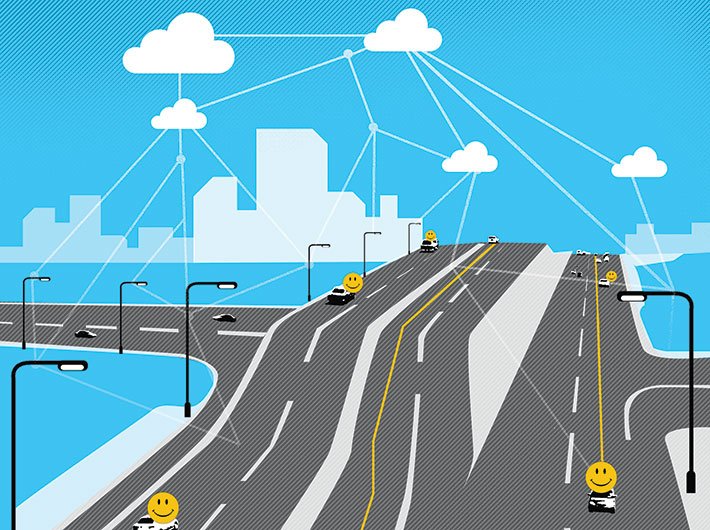These modest looking objects could be transformed to become new powerhouses, literally, and solve a myriad of India’s resource problems
The internet of things (IoT) tribe is growing rapidly. While there already has been progress in areas such as smart homes, smart cars, smart grids and smart cities, more new “smart” segments keep adding to the list.
The latest in the sequence are the ones like smart poles and smart roads, which, for a change, have the potential to cause much cheer for civic bodies like municipalities and road authorities, which hitherto have just been sitting on the fence of IoT and, at best, merely watching the show.
Meanwhile, as the Digital India juggernaut gathers momentum and starts rolling, the benefits are being outlined for various stakeholders including the governments, power generation and distribution companies, the citizens, and so on. At the same time, a realisation that the revenue collection units like municipalities and infrastructure bodies like road authorities need to get empowered and benefited is also coming fast.
This piece focuses on the potential of the smart pole and smart road segments as the accelerators of an IoT-led part of the digital transformation.
Unlocking the pole’s potential
With the miniaturisation of various infrastructure, equipment is becoming a reality across diverse sectors, the modest electric pole is suddenly getting discovered as one of the most underutilised resources that lie with municipalities and utility companies. For example, these streetlight poles could be retrofitted with smart LED-based lighting, which experts say could lead to energy saving of between 50 and 80 percent within a city. At the same time, the poles could be leased out to mobile service providers for deployment of their small cells. Ericsson, for one, is actually piloting with such a solution across the globe and understandably within India too.
Because of a high population density, especially in urban areas, mobile towers often cannot be deployed far enough from residential as well as commercial settlements. This has been at the core of contentious issues like electromagnetic radiation from towers and their debatable impact on human health. By blending the relatively low-signal small cells with electric poles, there could be a win-win for many players at the same time. While telecom companies could have the right-of-way and radiation issues addressed in an effective manner, the municipalities and utility companies could monetise their assets without having to levy higher taxes and tariffs on citizens.
The sheer reach that the streetlight poles have makes them well suited for delivery of mobile services in almost all urban areas and in vast parts of rural India too. Moreover, once transformed into smart poles, these could be used to offer a range of solutions including charging for electric vehicles, parking meter, digital signage and location maps, air quality sensors and surveillance equipment, among others.
From smart roads to smart grids
The yawning power deficit in India means that it is hard to light up the highways when there is not enough power to light up the streets in residential and commercial areas. Patrolling and monitoring of these dark highway stretches also becomes an insurmountable task.
Smartification of these roads, by retrofitting them with motion sensors and smart lighting solutions, for example, could address many if not all of the problems, to begin with.
As some pilots globally have already shown, motion sensors could be used to dynamically light up a road stretch when vehicular movement is detected and switch off the illumination in the absence of any movement. This could help increase the useful period of lighting by optimising the available amount of energy.
A step further could be to retrofit the roads with metallic crystals embedded underneath the surface, and the effect could be generation of electrical energy, which could then be harvested and turned into usable electricity. As pilots in countries like Israel have illustrated, the electricity could be used to light up the street lights, signs and even nearby houses.
The amount of electricity generated in such an application would be directly proportional to the volume of vehicular traffic and predictably works better with the passage of heavy vehicles.
In an even next stage, as the number of electric vehicles grow on the road (and smart roads would help encourage that growth), dedicated lanes could be created for vehicles to keep getting charged on the go, thus enabling one to traverse longer stretches without the need for stopping over for recharging.
Smart roads could thus initiate a virtuous cycle that could help greatly address energy deficits in a sustainable manner. Governments could very well consider strategically moving all their public transport onto such systems to kick-start the process in a manner that gives it the threshold to make it economically attractive. Of course, public-private partnerships could be considered to overcome the technological as well as financial challenges, to begin with.
Well architected IoT solutions could make all this very much happening.
Tackling digital vandalism
As a recent Gartner research has pointed out, the spread of digital (including IoT) capabilities into more and more systems also has a flip side – it empowers the unscrupulous elements as much as it enables the businesses and industries. “Digital signage; heating, ventilation and air conditioning systems; and even lighting and environment controls are subject to attacks, especially in industries where few policies for detecting and preventing hacks on these kinds of systems are in place,” the research notes.
There is no reason why systems like smart poles and smart roads and their subsystems would be immune to any of these digital attacks. Yet, it may be envisaged that the scale of such deployments would also bring in the resources required to counter any such attacks and safeguard the installations.
Are municipalities geared to go smart?
A technology can ultimately be only as good as how it gets implemented – by the people and through the processes. Gartner has noted that through 2020, 95 percent of cloud security failures will be the customer’s fault, as employees inappropriately share huge amounts of data with other employees, external parties, and sometimes the entire internet.
Again, what is true of enterprises is also true of government organisations and what is said of cloud security may also be said of IoT. After all, technology is only one part of a system. The other, and perhaps more important part, comprises the people and the processes.
As such, the onboarding process of the employees onto the platforms and systems being employed for smart poles and smart roads would play an important role in the overall success of the systems.
Smart-enabling bodies like municipalities and road authorities could go a long way in making Digital India a ground-level program, or even better, a grounds-up programme. In particular, the municipalities could also serve as digital capacity building centres, which in turn could serve as feeder units for training resources at ward and panchayat levels as well.

